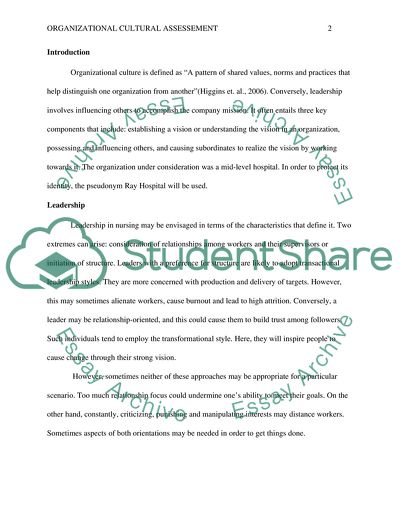Cite this document
(ORGANIZATIONAL CULTURAL ASSESSMENT Essay Example | Topics and Well Written Essays - 1000 words, n.d.)
ORGANIZATIONAL CULTURAL ASSESSMENT Essay Example | Topics and Well Written Essays - 1000 words. https://studentshare.org/medical-science/1818627-organizational-cultural-assessment-ray-hospital
ORGANIZATIONAL CULTURAL ASSESSMENT Essay Example | Topics and Well Written Essays - 1000 words. https://studentshare.org/medical-science/1818627-organizational-cultural-assessment-ray-hospital
(ORGANIZATIONAL CULTURAL ASSESSMENT Essay Example | Topics and Well Written Essays - 1000 Words)
ORGANIZATIONAL CULTURAL ASSESSMENT Essay Example | Topics and Well Written Essays - 1000 Words. https://studentshare.org/medical-science/1818627-organizational-cultural-assessment-ray-hospital.
ORGANIZATIONAL CULTURAL ASSESSMENT Essay Example | Topics and Well Written Essays - 1000 Words. https://studentshare.org/medical-science/1818627-organizational-cultural-assessment-ray-hospital.
“ORGANIZATIONAL CULTURAL ASSESSMENT Essay Example | Topics and Well Written Essays - 1000 Words”. https://studentshare.org/medical-science/1818627-organizational-cultural-assessment-ray-hospital.


